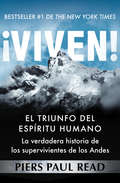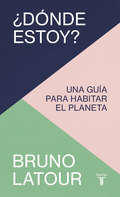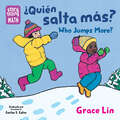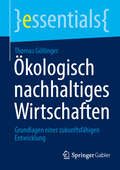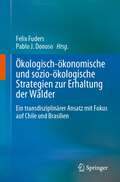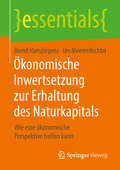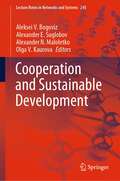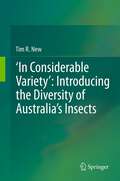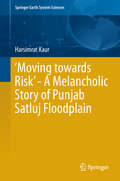- Table View
- List View
¡Viven!: El triunfo del espíritu humano
by Piers Paul ReadBestseller #1 de TheNew York Times: La verdadera historia de un equipo de rugby que recurre a lo inimaginable cuando su avión se estrella en los Andes. Reinaba el buen ánimo cuando el Fairchild F-227 despegó desde Mendoza, Argentina, con rumbo a Santiago, Chile. Había cuarenta y cinco pasajeros a bordo, entre ellos un equipo de rugby amateur uruguayo y los amigos y parientes de los jugadores. El cielo estaba despejado ese viernes 13 de octubre de 1972 y, a las 15:30 de la tarde, el piloto del Fairchild anunció que se encontraban a 15.000 pies de altura. Sin embargo, un minuto después, la torre de control de Santiago perdió todo contacto con la aeronave. Chilenos, uruguayos y argentinos buscaron el avión durante ocho días pero había nevado con intensidad sobre los Andes y las posibilidades de encontrar los restos eran escasas. Diez semanas más tarde, un campesino vio a dos hombres con aspecto harapiento haciendo señas, desesperados, desde el otro lado de un río. Les tiró un pedazo de papel y un bolígrafo envueltos en un pañuelo y los hombres enseguida le devolvieron una nota que leía: &“Venimos de un avión que cayó en las montañas&”. Dieciséis pasajeros sobrevivieron. Acamparon en el fuselaje del avión en medio de la naturaleza gélida de los Andes, donde soportaron temperaturas heladas, peligrosas lesiones, una avalancha, y hambre extrema. Cuando comenzaron a acabarse las escasas provisiones de alimento y, luego de oír en la radio que habían logrado armar, que los equipos de rescate habían cesado su búsqueda, las esperanzas de los pasajeros se empezaron a desvanecer. Con el fin de salvar sus propias vidas, estos tuvieron que no sólo mantener la fe, sino que también debieron tomar una imposible decisión: comer o no la carne de sus amigos que habían muerto. Una historia de resiliencia, determinación, y el espíritu humano, ¡Viven! es un relato conmovedor de una historia de supervivencia desgarradora.
¿Cómo sabes que es invierno? (¡Arriba la Lectura!, Read Aloud Module 5 #2)
by Ruth Owen Suzy Gazlay Kimberly BrennemanNIMAC-sourced textbook
¿Cómo se ayudan los seres vivos? (¡Arriba la Lectura!, Level I #6)
by Alice ReardonLas plantas, los animales y las personas se ayudan unos a otros. ¿Cómo ayudas tú? NIMAC-sourced textbook
¿Dónde estoy?: Una guía para habitar el planeta
by Bruno LatourUNA PODEROSA INVITACIÓN A DESCONFINARNOS DE CIERTAS IDEAS ARRAIGADAS. «El filósofo más famoso e incomprendido de Francia, ampliamente reconocido como uno de los pensadores contemporáneos más inventivos e influyentes del mundo.»The New York Times «Hemos perdido la antigua libertad, pero ha sido para ganar otra.» En este ensayo en forma de cuento, inspirado en La metamorfosis de Kafka, Bruno Latour, uno de los pensadores más originales e influyentes del mundo, nos invita a desconfinarnos de ciertas ideas arraigadas de la modernidad, como las de «crecimiento económico», «progreso» o «dominio de la naturaleza». No hay duda de que la crisis le ha dado la razón de manera patente en muchas de las teorías que ha defendido a lo largo de los años. En este libro da cuenta de ello elegantemente. Tras la terrible experiencia del confinamiento, tanto los estados como los individuos buscan la manera de regresar lo más rápido posible al mundo anterior. Pero hay lecciones que aprender de esta experiencia, al menos en beneficio de aquellos a quienes podría llamarse terrestres («cualquiera que acepte vivir en una zona crítica y contribuir a su habitabilidad»), conscientes de que la crisis sanitaria está inmersa en otra crisis mucho más grave, la impuesta por el Nuevo Régimen Climático. El confinamiento nos ha ofrecido una gran oportunidad que debemos aprovechar: la de comprender finalmente dónde vivimos y en qué Tierra podremos desenvolvernos, a falta de la antigua. Tras un aterrizaje sin duda violento, los terrestres deben explorar el suelo donde ahora vivirán y redescubrir el gusto por la libertad y la emancipación, pero en un lugar diferente. Ese es el objeto de este ensayo, que consta de breves capítulos, cada uno de los cuales explora una posible figura de esta metafísica del desconfinamiento a la que nos obliga la extraña época en que vivimos. La crítica ha dicho...«El filósofo más famoso e incomprendido de Francia, ampliamente reconocido como uno de los pensadores contemporáneos más originales e influyentes.»The New York Times «Uno de los pensadores más interesantes de la escena intelectual mundial. Sabe cómo llamar nuestra atención sobre la complejidad de los problemas, manteniendo una claridad expositiva fuera de lo común.»La Stampa «Latour adopta el tono de un cuento filosófico lúdico y erudito a la vez. Lo que escribe Latour nos concierne a todos los seres humanos.»Slate Magazine «Uno de los autores más comentados y citados del mundo. Inspira a generaciones de investigadores en filosofía y ciencias sociales. ¿Dónde estoy?,un ensayo más narrativo, es perfecto para iniciarse en su obra.»Philosophie Magazine «Una invitación a inventar nuevas maneras de vivir.»Le Monde
¿Quién salta más? / Who Jumps More? (Storytelling Math)
by Grace Lin¡Libro de cartón grueso ahora disponible en español-inglés bilingüe! La ganadora del Honor de Caldecott, Grace Lin, celebra las matemáticas para todos los niños, ¡en todas partes!Board book now available in bilingual Spanish-English! Caldecott Honor winner Grace Lin celebrates math for every kid, everywhere!Olivia y Mei saltan en la nieve hasta llegar al árbol alto. Mei da unos saltos grandes como un reno. Olivia da muchos saltitos más pequeños como un conejo. Cada una salta "más" de manera diferente. Una exploración juguetona de la medición, la proporción y la amistad.Storytelling Math celebra a los niños usando las matemáticas en sus aventuras diarias mientras juegan, construyen y descubren el mundo que les rodea. Historias alegres y actividades manuales hacen que sea fácil para los niños y sus adultos explorar las matemáticas cotidianas juntos. Desarrollado en colaboración con expertos en matemáticas de TERC, una organización educativa con enfoque en ciencia, tecnología, ingeniería y matemáticas (STEM, por sus siglas en inglés), bajo una subvención de la Fundación Heising-Simons.Olivia and Mei jump in the snow all the way to the tall tree. Mei takes a few big leaps like a deer. Olivia makes lots of smaller hops like a bunny. Each jumps &“more&” in a different way. A playful exploration of measurement, proportion, and friendship.Storytelling Math celebrates children using math in their daily adventures as they play, build, and discover the world around them. Joyful stories and hands-on activities make it easy for kids and their grown-ups to explore everyday math together. Developed in collaboration with math experts at STEM education nonprofit TERC, under a grant from the Heising-Simons Foundation.
¿Quién se esconde? (¡Arriba la Lectura!, Level C #10)
by Cheryl Jakab Luke JureviciusAlgunos animales tratan de esconderse. ¿Los puedes ver? NIMAC-sourced textbook
¿Qué es el suelo? (¡Arriba la Lectura!, Level K #90)
by Phillip SimpsonEl suelo es algo muy importante. En él cultivamos plantas y alimentos. Aprende sobre los diferentes tipos de suelo, como se forma el suelo y para qué sirve. NIMAC-sourced textbook
¿Realmente quieres visitar un humedal? (¡Arriba la Lectura!, Read Aloud Module 7 #3)
by Bridget Heos Daniele FabbriNIMAC-sourced textbook
Árboles del bosque (¡Arriba la Lectura! Level O #56)
by Sally Cowan Andrew LoueyNIMAC-sourced textbook <p><p> En lo más profundo del bosque de Tasmania han descubierto un gigante. ¿De dónde vino? ¿Hay más como él? ¿Y por qué llaman Centurión a este gigante de casi 100 metros de altura?
Ökologisch nachhaltiges Wirtschaften: Grundlagen einer zukunftsfähigen Entwicklung (essentials)
by Thomas GöllingerIn diesem essential werden die wichtigsten Grundlagen des ökologisch nachhaltigen Wirtschaftens erläutert. Nach einer kompakten Klärung der verschiedenen Verständnisse und Bedeutungen von „Nachhaltigkeit“ und „Nachhaltiger Entwicklung“ erfolgt eine Darlegung der prinzipiellen Problematik im Kontext von Ökologie und Ökonomie. Eine Erörterung der diversen Handlungsfelder und Strategieoptionen zeigt die vielfältigen Möglichkeiten bezüglich Effizienz-, Konsistenz- und Suffizienz-Innovationen auf. Schließlich erfolgt ein Blick auf die aktuellen Herausforderungen des Nachhaltigkeitsmanagements.
Ökologisch-ökonomische und sozio-ökologische Strategien zur Erhaltung der Wälder: Ein transdisziplinärer Ansatz mit Fokus auf Chile und Brasilien
by Felix Fuders Pablo J. DonosoIn diesem Buch werden Strategien zur Verbesserung der Widerstandsfähigkeit und des Schutzes der gemäßigten Wälder in Südamerika vorgeschlagen, damit diese Wälder auf nachhaltige Weise Ökosystemleistungen erbringen können. Als solches trägt es zum Entwurf eines widerstandsfähigen Mensch-Wald-Modells bei, das die Multikulturalität lokaler Gemeinschaften berücksichtigt und in vielen Fällen Aspekte der ökologischen Ökonomie, der Entwicklungsökonomie und der territorialen Entwicklungsplanung einbezieht, die mit indigenen Völkern oder „First Nations“ zu tun haben. Darüber hinaus werden Vorschläge für öffentliche und territoriale Politiken unterbreitet, die den Erhaltungszustand der einheimischen Wälder und Waldökosysteme verbessern, und zwar auf der Grundlage einer kritischen Analyse der wirtschaftlichen Faktoren, die zur Degradierung der Waldökosysteme im heutigen Südamerika führen.Dieses Buch wurde von Mitgliedern des Transdisziplinären Forschungszentrums für soziale und ökologische Strategien zur nachhaltigen Waldbewirtschaftung in Südamerika an der Universidad Austral de Chile konzipiert. Es enthält Beiträge von renommierten Forschern aus der ganzen Welt, die die Bereiche Wirtschaft, Ökologie, Biologie, Anthropologie, Soziologie und Statistik miteinander verbinden. Es handelt sich jedoch nicht einfach um eine Sammlung von Arbeiten, die von Autoren aus verschiedenen Disziplinen verfasst wurden. Vielmehr erhebt jedes Kapitel den Anspruch, in sich selbst transdisziplinär zu sein. Dieser Ansatz macht das Buch zu einem einzigartigen Beitrag zur Verbesserung sozialer, betriebswirtschaftlicher und politischer Ansätze in der Waldbewirtschaftung, die dazu beitragen, die Ökosystemleistungen des Waldes zu schützen und nachhaltiger zu gestalten. Dies wiederum kommt den lokalen Gemeinschaften und der Gesellschaft als Ganzes zugute, indem die negativen externen Effekte der Forstwirtschaft verringert und die Zukunftschancen verbessert werden.
Ökonomische Inwertsetzung zur Erhaltung des Naturkapitals: Wie eine ökonomische Perspektive helfen kann (essentials)
by Bernd Hansjürgens Urs MoesenfechtelIn diesem essential beschreiben Bernd Hansjürgens und Urs Moesenfechtel die Dringlichkeit eines Perspektivenwechsels bei unserem Umgang mit der Natur. Sie schlagen dazu eine ökonomische Inwertsetzung von Ökosystemleistungen vor und zeigen auf, welche Handlungsmöglichkeiten dieser Ansatz dem Naturschutz eröffnet.
Сooperation and Sustainable Development (Lecture Notes in Networks and Systems #245)
by Aleksei V. Bogoviz Alexander E. Suglobov Olga V. Kaurova Alexander N. MaloletkoThis book presents a systematic view of the cooperative sector of the economy from the standpoint of sustainable development. On the one hand, the book reveals the consequences of business cooperation for the implementation of global sustainable development goals, primarily in terms of environmental protection and food security. On the other hand, the book defines the essence of sustainable development of the cooperative sector of the economy as a demonstrative economic practice that reflects the general state of socio-economic systems. Scientific, methodological, and applied recommendations for the systemic optimization of the management of the cooperative sector of the economy in the interests of simultaneously achieving its maximum positive impact on the implementation of sustainable development goals, as well as maintaining its stability are proposed.The book contains the best works based on the results of the International Scientific and Practical Conference “Cooperation and Sustainable Development”, which was held on December 15-16, 2020. Its target audience is scientists studying processes of business structures cooperation, business entities carrying out cooperation, as well as public authorities, which will find guidelines for improving state regulation of the cooperative sector of the economy in this book.
عمدة الطبيب في معرفة النبات
by يحيى مراددراسة التراث وتاريخ العلوم عند العرب والمسلمين، أمر لابدّ منه في مرحلة التحوّل التي تمر بها الأمة العربية. ذلك لأن اطلاع أبنائها على المنجزات العلمية التي حققها الأجداد في الماضي، لابدّ أن يكون باعثاً على الثقة في النفوس، وحافزاً لحث الخطى في طريق التقدم العلمي والتقني الذي نسعى لتحقيقه. ومن واجب التراث علينا أن نتصدى بأنفسنا لكشف مكنوناته، ونشر روائعه، وإلقاء الضوء على مدى مساهمته في إغناء المعرفة والعلم خلال قرون عديدة، بعد أن ظل هذا العمل مقتصراً على المستشرقين الذين ينتمون إلى أمم مختلفة. وفي مكتباتنا العربية العامة والخاصة كثير من المخطوطات القيّمة، والكتب النافعة التي لم تدرس حتى الآن، ولاسيّما في موضوع الطب والصيدلة وعلم النبات والتي كان لها سماتها، فأدت دوراً كبيراً في إثراء العلوم وبث روح الحياة. حيث كان يلتقي النبات والدواء في مسيرة واحدة لتأمين الغذاء النافع والدواء الناجع. لقد توافرت للعرب ثروة معرفيّة ولغويّة هائلة حين انصرفوا إلى الطبيعة، كغيرهم من الأمم التي سبقتهم، فوجدوا أن الأرض تزخر بالخيرات، من شجر وعشب وبقل وتابل وغذاء، فانصرفوا إلى "علم الفلاحة" ودراسة النباتات. وألّفوا في ذلك كتباً كثيرة لها أهميتها في ميادين علوم النبات والصيدلة والطب وغيرها. وكانت عنايتهم بأصناف النبات نابعة من حاجتهم إلى الغذاء والدواء معاً. وإلى التطيب بالعطور، وصناعة الصباغة والدباغة، وتركيب المواد الصيدلانية من جذور وقشور وثمار وبذور وأعشاب نباتات مختلفة. وهكذا أصبحت المعاجم العربية، والمؤلفات العلمية، غنية بكم وافر من الأسماء والمصطلحات النباتية، وضمَّت معارف العرب المسلمين القدماء في علمي الطب والنبات. فكانت مصدراً لمن ألف وكتب في المفردات النباتية والغذائية والدوائية. وهي كثيرة العدد نذكر منها: "كتاب النبات" لأبي حنيفة الدينوري(1) ت 282هـ-895م)، وكان من أكثر المعاجم جمعاً للمادة، وأعظمها أثراً في معاجم النبات التي ألفت فيما بعد.
‘In Considerable Variety’: Introducing The Diversity Of Australia's Insects
by Tim R. NewThe book introduces basic entomology, emphasising perspectives on insect diversity important in conservation assessment and setting priorities for management, as a foundation for managers and others without entomological training or background. It bridges the gap between photographic essays on insect identification and more technical texts, to illustrate and discuss many aspects of taxonomic, ecological and evolutionary diversity in the Australian insect fauna, and its impacts in human life, through outlines of many aspects of insect natural history.
‘Moving towards Risk’ - A Melancholic Story of Punjab Satluj Floodplain (Springer Earth System Sciences)
by Harsimrat KaurThis book explains the tragic tale of the Satluj floodplain since its inception. As a landscape this floodplain entity evolves and sets a niche to distinctive natural and cultural aspects. The historical reconstruction of the landscape transformation depicts the excessive human encroachment and development activities which leads to more than fifty percent of landscape transformation. Data set layers were generated in a geospatial environment, with the use of multiscale and multitemporal satellite imageries, empirical field verification, and ancillary data input. An integrated landscape model was hence formed in order to identify the causal links between natural and cultural aspects.The author shows a landscape transformation matrix and change detection maps to explain the spatial trends and patterns of land use and land cover change. Pixel wise land use and land cover gain-loss algorithm were identified and measured for a selected time period. Changing spatial pattern of land cover to land use ratio are explained with underlying local to regional level causes. The author thoroughly explains the satellite image interpretation and related methodology. This book provides the detailed transition journey of landscape conversion from resource rich natural entity to a human dominated ‘hazardscape’. It also explains how the expansion of population and related activities in the close vicinity of an active floodplain accentuates the problem of flood risks and how it affects the human and livestock life and creates economic loss. The author maps and explains the vector and magnitude of increased human pressure on the landscape and its adverse ecological implications, and describes issues with reference to the hazard status of the Punjab Satluj floodplain, including increased flood risk, increased pressure on agricultural land and depletion of resources, loss of biodiversity, qualitative and quantitative loss to surface and sub-surface water, and soil degradation (soil erosion, waterlogging and soil loss).Recommendations are provided with a detailed provision of potential applications with the underlying agenda of further conversion of this ecologically highly vulnerable flood prone ‘hazardscape’ to a Green Habitat. This book consist of two major themes: land use/land cover change and floodplain. The author answers all the geographical questions (what, where, when, why and how) related with both themes and provides an outlook to potential future prospects. The book is targeted at stakeholders, students, researchers and policy makers to optimize their interest and to guide them towards a positive charge in sustainable resource management through suitable and best possible sustainable utilization of landscape.
